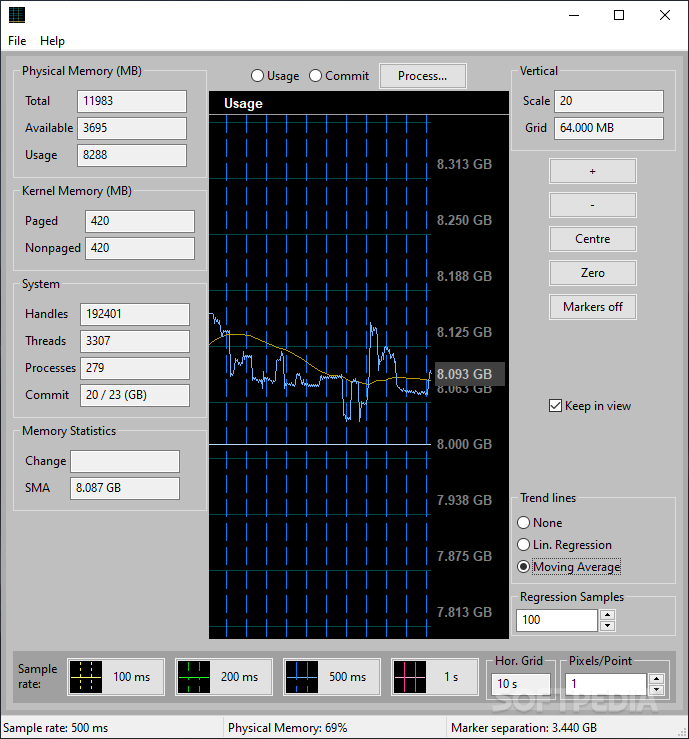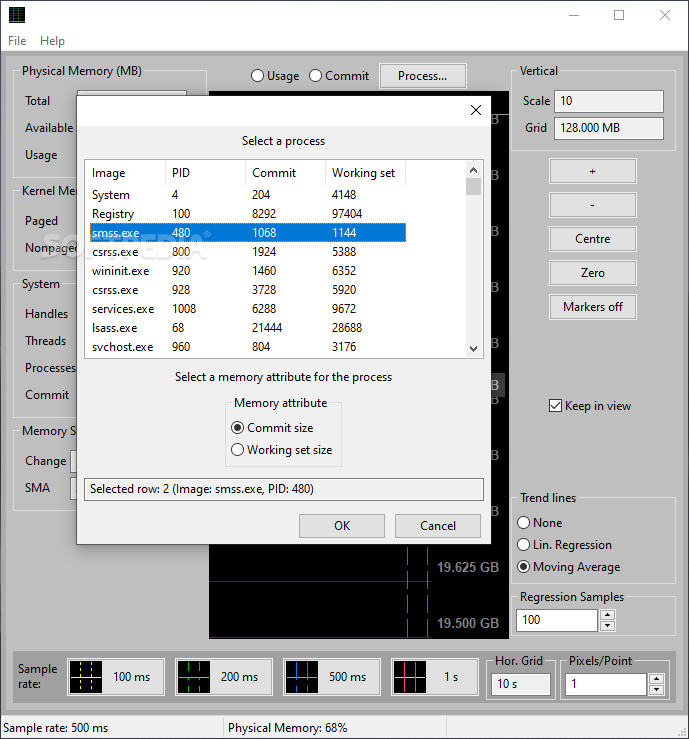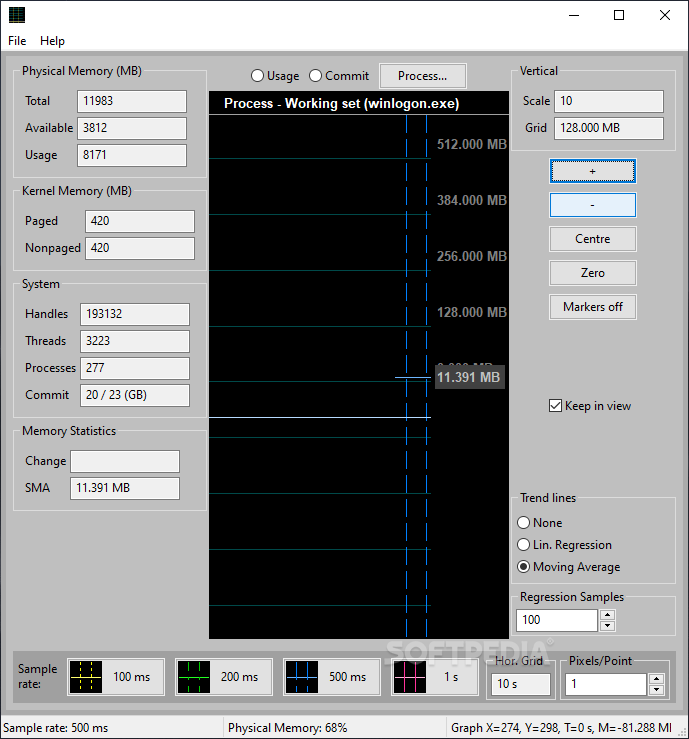
wxLeakyBin
1.0.1.0Analyze memory usage to the finest detail for the entire system and for individual processes, with the possibility to plot commit charges
The RAM memory is used to keep a hold of data that needs to be accessed quickly. Every application running on your computer requires RAM. But even on high-end machines, RAM is a limited resource and, therefore, the machine’s pool of memory can be depleted in case applications use memory without freeing it, eventually. In fact, memory leaks are the reason why sometimes you might feel your computer is running slowly and applications become unresponsive.
The application displays memory usage statistics within its main window, revealing the total, available and used memory amounts, the pages and non-paged Kernel memory and the system memory.
As a realtime RAM monitoring application, wxLeakyBin displays a graph that reveals the RAM usage in detail, with customizable update frequency down to 100ms, much faster than the Windows Task Manager. The data is updated in real time and, furthermore, you have several tools at your disposal to carry out a thorough analysis of your own.
There are a few measurement tools at your disposal. Markers, average and linear regression trend lines can be placed on the graph to assess the changes in memory usage. These features enable you to find small memory leaks that are usually not shown in Task Manager.
A realtime RAM monitoring tool
Windows comes with various built-in utilities to help you get an insight on RAM usage, starting with the Task Manager and continuing with the Performance Monitor. Both can help you view what is taking so much RAM but they do not offer graphical tools to detect even the smallest memory leaks. wxLeakyBin was created to do just that, helping you understand where all the RAM memory is allocated.The application displays memory usage statistics within its main window, revealing the total, available and used memory amounts, the pages and non-paged Kernel memory and the system memory.
As a realtime RAM monitoring application, wxLeakyBin displays a graph that reveals the RAM usage in detail, with customizable update frequency down to 100ms, much faster than the Windows Task Manager. The data is updated in real time and, furthermore, you have several tools at your disposal to carry out a thorough analysis of your own.
Find even the smallest memory leaks
Thanks to the magnified scale factor, you can zoom in and out to check out the RAM usage down to the finest detail. Moreover, wxLeakyBin is capable of plotting the commit charge for the entire system and individual processes.There are a few measurement tools at your disposal. Markers, average and linear regression trend lines can be placed on the graph to assess the changes in memory usage. These features enable you to find small memory leaks that are usually not shown in Task Manager.
Get a detailed insight on RAM usage
There are a few things you can do to free up RAM, such as closing unnecessary programs, disabling some startup applications, defragmenting hard disks, or increasing the amount of virtual memory. However, if you are oriented towards the cause rather than a momentary fix, an application such as wxLeakyBin can help you get an overview of the RAM usage and identifying memory leaks.3.2 MB
Info
Update Date
Mar 11 2021
Version
1.0.1.0
License
Freeware
Created By
C J Seymour
Related software System









